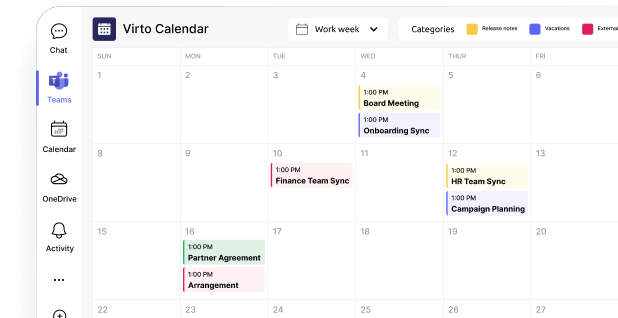Copilot for SharePoint Explained: Features, Benefits, and Practical Usage
Copilot for SharePoint is more than just an AI assistant—it’s a smarter way to manage content, automate tasks, and boost team productivity. Discover how it works, what it can do, and how to make the most of it.
Artificial Intelligence is reshaping the way we interact with digital tools, and Microsoft Copilot is at the forefront of this transformation. Designed as an AI-powered assistant, Copilot helps users work smarter, not harder by streamlining tasks, automating processes, and enhancing productivity. It seamlessly integrates with Microsoft 365 apps—including SharePoint, making collaboration and content management more efficient than ever.
Instead of manually sorting through documents, drafting reports, or updating site content, Copilot can handle these tasks in seconds. It can summarize key points, suggest edits, and even generate new content based on your needs. This isn’t just about saving time—it’s about working smarter and focusing on what really matters.
In this article, we’ll explore how Microsoft Copilot enhances SharePoint, its key features, benefits, and how you can set it up to maximize its potential. Whether you’re managing documents, organizing projects, or improving team collaboration, Copilot is here to make SharePoint work for you.
On top of that, the article offers practical solutions on how Virto’s tools take your Copilot experience in SharePoint to the next level. We will dive deeper into how SharePoint On-Premise Web Parts and Microsoft 365 & SharePoint Online Apps can enhance search capabilities, automate processes, and streamline document management.
👉 Before exploring Copilot for SharePoint, you might want to gain more insights into the essence of how SharePoint works. We encourage you to explore earlier articles in our blog:
- SharePoint Overview
- Differences between Modern & Classic SharePoint
- Best Practices for SharePoint Document Management, Libraries and Security
- Guide to SharePoint Online
Microsoft Copilot in SharePoint: A Smarter Way to Work
In this section you will find the overview of Copilot In SharePoint and its key features.
What is SharePoint Copilot?
Microsoft Copilot is an AI-powered assistant built to make work in SharePoint faster and easier. It helps automate routine tasks, organize data, and improve the way teams collaborate. Since it’s fully integrated with Microsoft 365—including Teams, Word, and Excel—it fits right into existing workflows without disruption.
In SharePoint, Copilot can pull information from document libraries, lists, and sites, helping users quickly find files, generate summaries, and create new content. Instead of spending time searching for information or formatting pages, you can let AI handle the heavy lifting—so you can focus on more important work.
By embedding AI directly into SharePoint, Microsoft is changing the way teams interact with content, making collaboration more intuitive and efficient. Up next, we’ll explore how Copilot works, its key features, and how to set it up for success.
Moreover, there is 𝗖𝗼𝗽𝗶𝗹𝗼𝘁 𝗣𝗿𝗼𝗺𝗽𝘁 𝗚𝗮𝗹𝗹𝗲𝗿𝘆 𝗔𝗽𝗽. As Fabio Bielli, Digital Workplace IT Manager at BIP, recently shared on LinkedIn:
“While general-purpose AI continues to evolve, the real power lies in understanding how adapt these systems to specific business needs, building workflows that match your organization’s unique needs.
Microsoft’s new#CopilotPromptGallery App for Microsoft 365 represents a significant step forward in this direction. What makes this particularly valuable is the focus on context-specific prompting.
Teams can now:
- Create and save prompts tailored to their industry and business context
- Share successful prompt templates with colleagues
- Access curated prompt collections organized by role and function
- Integrate company-specific data into their prompting strategy
For example, a consulting firm might save, share and use prompts like:
“Analyze current hiring trends in consulting and create an Excel summary”
“Generate a PowerPoint executive summary of project findings for our client CEO.
These aren’t just generic commands – they’re specialised tools that incorporate business context and organizational knowledge”
👉 What is Copilot (AI) available for SharePoint? Microsoft Copilot SharePoint is an AI-powered assistant designed to simplify content management, automate tasks, and enhance collaboration within SharePoint sites. Integrated seamlessly with Microsoft 365, it works alongside apps like Teams, Word, and Excel, helping users quickly create, organize, and retrieve information. Copilot can generate page summaries, suggest content updates, and pull relevant data from document libraries, lists, and sites, reducing manual effort and improving efficiency. Whether drafting reports, managing project documents, or structuring site content, Copilot makes working in SharePoint faster, smarter, and more intuitive.
Key features of Copilot in SharePoint
Microsoft Copilot in SharePoint goes beyond being just an AI assistant—it transforms the way teams manage content and collaborate. Here’s what it can do:
- Generate and refine content – Need a quick draft or a polished update? Copilot can create and edit documents using information stored in SharePoint, making content creation faster and easier.
- Analyze data and build reports – Pull insights from document libraries, lists, emails and pages to create summaries and reports without sifting through endless files.
A recent LinkedIn post by Fabio Bielli, Digital Workplace IT Manager at BIP, highlighted the impact of Copilot on SharePoint in email management.
“The latest improvements in #Copilot for #Outlook make email management so much easier
- Smart inbox organization: Copilot helps you sort and prioritize emails intelligently, keeping your inbox clean and manageable
- Email analysis at a click: Get quick summaries and key points from long email threads, helping you catch up faster
- Seamless meeting scheduling: Finding the perfect time for 1:1 meetings is now effortless – Copilot checks everyone’s availability and suggests the best slots”
- Provide AI-powered support – Get real-time answers to questions, step-by-step guidance, and suggestions to streamline workflows.
- Assist in site and page creation – Whether you’re setting up a new SharePoint site or adding content, Copilot helps structure pages, suggest layouts, and optimize organization.
- Visualize data effortlessly – Turn raw data into charts, graphs, or dashboards, making complex information easier to understand and share.
- Offer personalized recommendations – Copilot learns from user behavior and content patterns to suggest relevant documents, updates, and actions.
- Integrate Microsoft 365 seamlessly – Work across Teams, Word, Excel, and other apps without switching contexts, keeping everything connected.
- Create videos – on LinkedIn, Fabio Bielli, Digital Workplace IT Manager at BIP noted:
“𝗜𝗺𝗮𝗴𝗶𝗻𝗲 𝗰𝗿𝗲𝗮𝘁𝗶𝗻𝗴 𝗽𝗿𝗼𝗳𝗲𝘀𝘀𝗶𝗼𝗻𝗮𝗹 𝘃𝗶𝗱𝗲𝗼𝘀 𝘄𝗶𝘁𝗵 𝗷𝘂𝘀𝘁 𝗮 𝘁𝗲𝘅𝘁 𝗽𝗿𝗼𝗺𝗽𝘁? Microsoft is making this a reality with the new text to video feature in #VisualCreator Agent, so directly integrated with your #Copilot365 and powered by #Clipchamp🎥✨
How you do it?
- Type a prompt in Copilot
- Clipchamp generates a custom script
- Automatically sources high-quality stock footage
- Assembles a complete video project with: Background music, Voiceover, Text overlays, Smooth transitions Background music
This isn’t just about creating videos from scratch. Instead, it leverages Microsoft’s enterprise-compliant stock media libraries to bring your ideas to life, everything in the Microsoft security posture and integrated with OneDrive for Business and M365 Asset Library.”
👉 Can Copilot read files in SharePoint? SharePoint Copilot can read files – but it’s not just about reading. It intelligently processes documents, lists, and libraries, pulling relevant information to help you generate content, summarize data, and create reports. Whether you need to draft a document based on stored files or get insights from spreadsheets, Copilot quickly finds what matters. Plus, with built-in security and permissions, it only accesses content users already have the right to see, keeping data safe while making work easier.
Why use Copilot in SharePoint?
Copilot for SharePoint brings a whole new level of efficiency to your workflow. First, it speeds things up by automating routine tasks, so you’re not spending valuable time on repetitive work. Need to analyze data or generate a report? Copilot handles it in a snap.
It also improves accuracy by automatically spotting and correcting mistakes, ensuring your documents and data are consistent and error-free. And perhaps best of all, it reduces the workload on your team—by taking care of the tedious tasks, Copilot frees everyone up to focus on higher-value work. No more wasting time on manual processes—just smart, automated support to help your team run at full speed.
SharePoint Copilot’s integration with other tools
One Drive
How Copilot Works with OneDrive and SharePoint:
- Personal File Management: Copilot helps you stay organized by syncing personal files in OneDrive with SharePoint, making it easier to access what you need, wherever you are.
- Streamlined Syncing: Forget about manual uploads or downloads. Copilot keeps everything in sync automatically, so files stay updated across both platforms.
- Managing Shared Data: When working with shared files, Copilot makes it easier to track, manage, and collaborate on data stored in OneDrive and SharePoint.
- Allowing Instant Access to Everything: Whether it’s a personal document or a shared resource, Copilot ensures quick access to all your files, boosting productivity and minimizing delays.
Moreover, with Copilot, you can quickly summarize, get answers, and compare your OneDrive files faster than ever. It’s like having a smart assistant that cuts through the clutter, helping you find what you need and giving you insights on your documents in a snap. No more sifting through endless folders—Copilot makes everything more efficient and saves you valuable time.
To learn more about SharePoint & OneDrive, we encourage you to explore additional piece on our blog:
SharePoint vs OneDrive:Key Differences
Copilot Studio
Linking SharePoint to Copilot Studio is a breakthrough if you want to create and train AI models. By connecting SharePoint to Copilot Studio, you can unlock a new level of collaboration and customization. It lets you easily pull data from SharePoint and use it to train AI models, helping you build smarter, more tailored solutions. Whether you’re automating processes or analyzing patterns, this integration makes it all much simpler and more efficient.
👉 How do I link SharePoint to Copilot Studio? Linking SharePoint to Copilot Studio is simple. First, you’ll need to set up your SharePoint site and ensure that the data you want to work with is well-organized. From there, go into Copilot Studio and connect it to your SharePoint account. This integration allows Copilot to pull relevant documents and data directly from SharePoint, so you can use that information to build and train AI models. Once connected, you’ll have the power to automate tasks, generate insights, and enhance your workflows with AI—directly leveraging your SharePoint content.
How to Get Started with Copilot in SharePoint
We are about to drill down into steps you need to take to start working with Copilot for SharePoint.
Activating Microsoft Copilot
To activate Copilot in Microsoft 365, follow these easy steps:
- Check your license: Make sure your Microsoft 365 subscription includes Copilot access. If it doesn’t, you’ll need to upgrade your plan.
- Go to the Admin Center: Head over to the Microsoft 365 Admin Center to manage your organization’s settings.
- Activate Copilot: Once you’re in the Admin Center, you’ll find the option to enable Copilot for your whole organization.
- Turn it on for specific users: You can then choose which users get access to Copilot. You’ll want to make sure the right people are set up to start using it immediately.
👉 How do I activate Copilot in Microsoft 365? To activate Copilot in Microsoft 365, first ensure you have the correct license. Then, navigate to the Microsoft 365 Admin Center, activate Copilot for your organization, and assign it to the relevant users.
Setting up Copilot agents in SharePoint
Setting up Copilot agents in SharePoint is all about making AI work smarter for your team. You can configure agents to handle specific tasks, assist different departments, and streamline workflows. By linking them to the right data sources, they provide relevant insights, automate repetitive processes, and enhance collaboration across your organization.
👉 How to enable Copilot agents in SharePoint?
- Start by accessing the Microsoft 365 Admin Center and ensuring that Copilot is activated for your organization.
- Navigate to SharePoint settings and configure AI agents based on specific tasks or departments.
- Assign the right permissions, connect them to relevant data sources, and customize their behavior to fit your team’s workflow.
- Once set up, these agents can assist with document management, data analysis, and even answering user queries, making collaboration smoother and more productive.
Practical Ways How to Use Copilot in SharePoint
You’ve got Copilot in SharePoint—now what? Let’s dive into real-world scenarios where Copilot can streamline workflows, boost productivity, and take the hassle out of everyday tasks.
Practical use cases
- Automate report generation using SharePoint data, with updates happening in real-time.
- Draft documents quickly based on existing SharePoint content.
- Search massive document libraries effortlessly with AI-powered queries.
- Prepare content for reports and presentations without starting from scratch.
- Automate document lifecycle tasks like creation, edits, and archiving.
👉 How to enable Copilot agents in SharePoint? Copilot is fully integrated with SharePoint, making it a powerful tool for managing content, automating tasks, and streamlining collaboration. It can pull information from document libraries, generate reports, assist with drafting content, and even help you find what you need in massive data sets—all within SharePoint. Whether you’re automating approvals, summarizing documents, or organizing projects, Copilot works behind the scenes to save you time and effort. If your organization is using Microsoft 365, chances are you can start using Copilot in SharePoint right away.
Collaboration made smarter
Copilot enhances teamwork by offering intelligent suggestions and automating repetitive tasks. Sharing it with colleagues is as simple as sharing a SharePoint link—just hit “Share” and let AI do the heavy lifting.
Real-world scenarios
- Automating document approval workflows to save time.
- Generating fresh ideas for presentations or reports with AI-powered brainstorming.
- Creating structured workflows that mirror real business processes.
Training Copilot for your needs
Training Copilot on your organization’s data is all about making AI work smarter for your specific needs. Instead of relying on generic insights, you can shape Copilot’s responses and recommendations based on your internal documents, workflows, and best practices.
Step 1: ensure that your SharePoint environment is well-organized. Clean, structured, and properly labeled data will help Copilot generate more relevant and accurate results. If your document libraries are cluttered with outdated files or inconsistently named folders, Copilot might struggle to provide useful insights.
Step 2: focus on permissions. Copilot pulls information based on user access, so make sure the right people have visibility into the right content. If sensitive data needs to be restricted, set up permissions accordingly to avoid unintended sharing.
Step 3: fine-tune Copilot’s performance. Start by using it on specific tasks, such as generating reports, summarizing policies, or pulling insights from past projects. The more interactions it has, the better it will learn to recognize patterns and deliver relevant suggestions.
👉 High-quality data is key. If your files are filled with outdated or incomplete information, even the smartest AI won’t be able to give you meaningful results. Keeping your SharePoint content up to date and well-organized ensures Copilot has a strong foundation to work with.
Customizing Copilot in SharePoint
Microsoft Copilot can be fine-tuned to match your specific needs. With the right setup, you can automate repetitive tasks, create custom AI agents, and extend Copilot’s capabilities beyond SharePoint.
Automating workflows with custom scenarios
By designing custom workflows, you can automate approvals, manage access requests, and streamline data processing without writing a single line of code. Using low-code tools, such as Power Automate, you can easily create logic-based automations that make everyday work faster and more efficient.
Building custom machine learning models for Copilot
If you need AI that truly understands your business, creating a custom machine learning model is the way to go. By training Copilot on your company’s specific data, you can improve its accuracy, automate unique processes, and make AI-driven insights more relevant. Here’s how to do it.
- Define the Use Case
Before you start building a model, you need a clear goal. Ask yourself:
- What specific problems do you want Copilot to solve?
- What type of data will the AI process—documents, reports, customer interactions, or something else?
- Should the model generate recommendations, classify data, or automate decision-making?
Common use cases include:
- Document classification – Automatically tagging and categorizing files based on content.
- Sentiment analysis – Understanding tone in customer feedback or employee surveys.
- Predictive analytics – Identifying trends in business data to support decision-making.
- Gather and Prepare High-Quality Data
AI is only as good as the data it learns from. To train an effective model, you’ll need structured, clean, and diverse datasets that accurately represent real-world scenarios.
- Identify relevant data sources – SharePoint libraries, CRM systems, internal reports, or third-party integrations.
- Ensure data consistency – Standardize formats, remove duplicates, and clean up inconsistencies.
- Label training data – If your model needs to classify or predict, manually tagging a dataset helps AI learn faster.
- Choose the Right AI Training Tools
You don’t need to be a data scientist to train an AI model—Microsoft offers several low-code and no-code tools to simplify the process:
- Copilot Studio – A user-friendly platform for designing AI workflows and training Copilot on custom datasets.
- Azure Machine Learning – A more advanced option if you need full control over AI models and deeper analytics.
- Power Automate + AI Builder – Allows you to integrate machine learning models directly into your workflows.
- Train and Test the Model
Once your data is ready, you can start training the model. This involves:
- Feeding the AI with labeled examples – The model learns patterns from past data.
- Running test cases – Checking how well the model performs on real-world examples.
- Refining and retraining – Adjusting the dataset or algorithm to improve accuracy.
- Deploy and Integrate the Model with Copilot
Once trained, your model needs to be deployed into your SharePoint environment so Copilot can use it effectively. This step usually involves:
- Publishing the model in Copilot Studio or Azure.
- Connecting the AI to SharePoint data sources using APIs or built-in integrations.
- Embedding the AI model in workflows to automate document management, generate insights, or assist employees with intelligent suggestions.
- Monitor and Improve Over Time
AI isn’t a one-and-done project—it improves with ongoing learning. Once deployed, track how well your model performs by:
- Reviewing user feedback to see if Copilot’s responses are accurate.
- Monitoring accuracy metrics in AI dashboards.
- Updating training data regularly to keep the model relevant as business needs evolve.
How to use low-code tools to customize Copilot
You don’t need to be a developer to fine-tune Copilot for your business. With low-code tools like Power Automate, Power Apps, and Copilot Studio, you can automate tasks, create smart workflows, and make Copilot work exactly how you need—all without writing complex code.
- Power Automate helps you set up workflows so Copilot can automatically process documents, send approvals, or summarize content.
- Copilot Studio lets you train Copilot with company-specific knowledge, customize responses, and connect it to external data.
- Power Apps enables you to build simple apps where employees can interact with Copilot, request reports, or search for key information.
For example, you can set up an approval workflow where Copilot reviews new SharePoint documents and routes them to the right team, or create an AI-powered FAQ assistant that answers employee questions instantly.
Once set up, you can test, tweak, and expand your workflows to make Copilot an even smarter part of your daily operations—no coding required.
How to create and share custom Copilot agents in SharePoint
Building a custom Copilot agent in SharePoint is easier than you might think—no coding required. With Copilot Studio, you can tailor an AI assistant to handle specific tasks, like answering internal FAQs, managing document approvals, or automating data processing.
Creating an agent is a straightforward process:
- Define the agent’s role – Decide what tasks it should handle, whether it’s pulling reports, assisting employees, or guiding users through workflows.
- Train it with relevant data – Use SharePoint content, company policies, and document libraries to refine its knowledge.
- Customize responses – Adjust how it interacts with users, ensuring clear, accurate, and helpful replies.
- Set up permissions – Control who can access and use the agent, following security policies to protect sensitive information.
- Share it with your team – Just like sharing a document, you can grant access to specific users or groups.
Boosting Copilot with data beyond SharePoint
If you need to take your Copilot’s capabilities beyond just SharePoint, no problem—Copilot Studio has you covered. You can easily add extra data sources to expand the content it works with, bringing in external information from other platforms or systems.
This means you’re not limited to SharePoint’s data—you can connect Copilot to other databases, applications, or even cloud services that your organization uses. The result? A smarter, more powerful AI assistant that draws from a broader pool of resources to give you even more precise insights and answers.
It’s simple to set up, and all it takes is a few clicks to integrate additional data sources, allowing Copilot to become a fully integrated part of your entire workflow ecosystem.
Automating tasks with Copilot Studio
With Copilot Studio, setting up tasks becomes a no-brainer. It’s designed to help you tailor Copilot’s capabilities to your specific needs without the headache of complex setups. Whether you’re automating a document approval process or streamlining data analysis, Copilot Studio lets you easily configure tasks to match your workflows.
Simply define the task, choose the right triggers and actions, and let Copilot handle the rest. You don’t need to be a coding expert to make it work—Copilot Studio’s user-friendly interface walks you through each step, allowing you to create seamless task automations that save time and boost productivity.
It’s like having a personal assistant who can not only complete tasks for you, but also learn how to handle new ones as your needs evolve.
👉How to link SharePoint to Copilot Studio?
Access Copilot Studio: Log in with your Microsoft 365 credentials.
Select Your SharePoint Site: In the settings, choose the SharePoint site you want to link.
Choose Data Sources: Pick the specific lists, libraries, or documents you want Copilot to access.
Sync the Data: Hit “Sync” to pull the relevant data into Copilot Studio.
Adjust Settings: Fine-tune your preferences to automate tasks, reports, or workflows.
Customizing Copilot for your workflow
Here are some ways you can customize Copilot to fit your needs:
- Automating access requests: Need approval for access to a file or resource? Copilot can streamline the process, handling requests automatically without you lifting a finger.
- Automating list data processing: Copilot can take data from your SharePoint lists and process it automatically—saving you time and effort on routine tasks.
- Setting up team notifications: Get your team’s attention when needed. You can customize Copilot to send out alerts, reminders, or updates to keep everyone in the loop.
- Generating personalized content: Copilot can suggest or even generate content (like reports, presentations, or emails) tailored to your team’s needs, saving you time and enhancing collaboration.
- Creating custom workflows: Set up specific workflows for your team, like automating document approvals, project tracking, or task assignments—all guided by Copilot’s AI.
- Automated document updates: If you manage documents that need frequent updating (like templates or contracts), Copilot can automatically update them based on new data inputs or changes.
Tips for Getting the Most Out of Copilot in SharePoint
Want to make Copilot work smarter for you? Here’s how to optimize its performance for the best results.
Optimizing Copilot’s performance with SharePoint content
To get the best results from Copilot, it’s crucial to fine-tune its settings according to your needs. Start by customizing the preferences so that Copilot works in sync with your workflow.
Another key factor is the use of clear, organized metadata. Well-structured metadata helps Copilot quickly find, analyze, and deliver the content you need, whether it’s for reports, searches, or summaries.
Also, don’t overlook the importance of keeping your document libraries up-to-date. Regularly reviewing and refreshing the structure ensures that Copilot’s AI algorithms can access relevant data faster, improving its overall performance. By staying on top of these aspects, you’ll maximize Copilot’s efficiency and ensure smooth, hassle-free usage in SharePoint.
Limitations and challenges: what to watch out for and how to fix it
While Copilot in SharePoint is a powerful tool, it’s not without its limits. Understanding its challenges—and knowing how to work around them—will help you get the best experience possible. Potential blockers might be:
- Restricted data access. If Copilot can’t pull certain information, it’s often due to permissions.
Fix: Make sure the right users have access to the right content, and check SharePoint’s settings to avoid unnecessary roadblocks.
- Data quality. If your metadata is messy or your documents are disorganized, Copilot might struggle to generate accurate results.
Fix: Keep your content structured and well-tagged in order to improve its performance.
- Licensing requirements. Some features might be unavailable without the right Microsoft 365 plan.
Fix: Always double-check your subscription to ensure you’re getting everything Copilot has to offer.
- Handling complex queries. While Copilot is smart, it’s not perfect—overly intricate or vague requests might lead to incorrect or incomplete responses.
Fix: Try rewording your prompt with clearer instructions.
Boosting Copilot with extra tools
Virto’s tools take your Copilot experience in SharePoint to the next level, making it more efficient, intuitive, and tailored to your workflow. With SharePoint On-Premise Web Parts and Microsoft 365 & SharePoint Online Apps, you can enhance search capabilities, automate processes, and streamline document management.
Enhanced search & smarter automation
One of the biggest challenges in SharePoint is finding the right information when you need it. Virto’s advanced search tools help Copilot quickly locate relevant documents, lists, and data—even in large, complex libraries. This means Copilot can deliver more precise answers, cutting down on time spent sifting through files.
Additionally, Virto enables automation of routine tasks, such as document approvals, access requests, and data updates, reducing manual workload and increasing overall efficiency.
A more intuitive & customizable interface
Working with SharePoint libraries can sometimes feel clunky, but Virto makes it easier by offering a more user-friendly, customizable interface. Instead of struggling with rigid structures, teams can tailor their document management system to fit their specific needs. Copilot then benefits from this improved organization, retrieving data more effectively and ensuring users get better, more relevant insights.
Seamless collaboration & workflow optimization
By integrating Virto’s tools, Copilot becomes even more powerful in team collaboration. Automated workflows ensure that information flows smoothly between teams, reducing bottlenecks and ensuring that critical updates, approvals, and notifications happen without delays. This means fewer errors, less manual intervention, and a SharePoint experience that truly works for your organization.
👉 Find more lifesavers for collaboration with external partners, clients, and vendors in our article:
Best Practices for Collaboration with External Users
Virto doesn’t just enhance Copilot—it transforms the way teams interact with SharePoint, making AI-driven assistance more accurate, efficient, and user-friendly.
Wrapping Up: Making the Most of Copilot in SharePoint
Copilot isn’t just another AI tool—it’s a real game-changer for how teams manage content, automate tasks, and collaborate in SharePoint. Instead of wasting time searching for documents or handling repetitive processes, Copilot takes care of the heavy lifting, so you can focus on getting things done faster and smarter.
But even the best AI works better with the right setup. That’s where Virto’s SharePoint On-Premise Web Parts and Microsoft 365 & SharePoint Online Apps come in. These tools make Copilot even more powerful by improving search accuracy, automating workflows, and giving teams a more intuitive way to work with SharePoint content.
Imagine Copilot pulling insights from an intelligently structured document library, automating approval workflows, or sending real-time notifications to your team—all seamlessly powered by Virto’s tools. By combining AI-driven assistance with powerful SharePoint enhancements, you’re not just working smarter—you’re redefining efficiency.
- Schedule a quick demo of both apps now
- Install a free trial version of Virto Calendar App for Microsoft 365 & SharePoint Online or Virto Calendar App for SharePoint On-Premise
👉To deepen your understanding of SharePoint and Copilot features, we recommend the following resources:
Official Microsoft materials:
- Get started with SharePoint agents
- AI Innovations in SharePoint and OneDrive
- Custom Copilots from SharePoint
- Frequently Asked Questions about Copilot in SharePoint
👉 For deeper inputs on related topics, browse through the VirtoSoftware blog:






